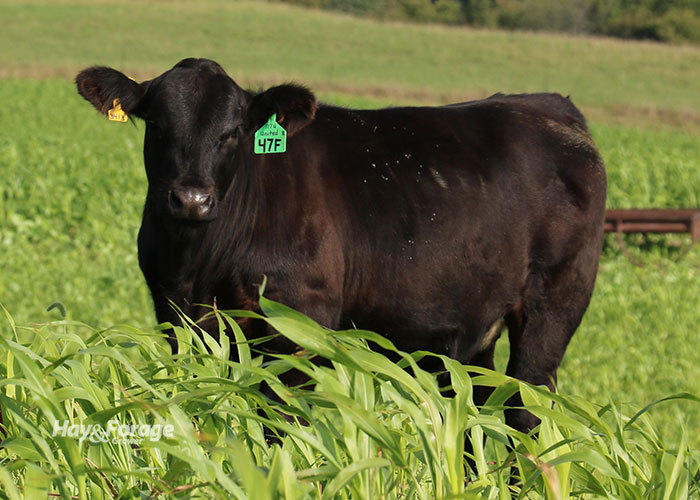Cover crops offer cost savings |
| By Amber Friedrichsen, Associate Editor |
|
|
 Cover crops can do more than reduce soil erosion and provide ground cover. They can also be an economical solution for prevented planting acres and a valuable forage source. While farmers can receive prevented planting payment subsidies from the U.S. Department of Agriculture Risk Management Agency if their first insured crop fails and a second crop is not planted, they are also eligible for subsidies if their second crop is a cover crop that is not harvested for seed or grain. Additionally, there is no penalty if these cover crops are grazed. In a recent article from University of Nebraska Extension, Connor Biehler and Ben Beckman, extension educators, and Mary Drewnoski, extension beef systems specialist, note that planting cover crops is one way to recuperate drought-stressed fields. Moreover, grazing cover crops is a more cost-effective way to feed livestock than mechanically harvesting forage, especially considering the current high fuel prices. Brassicas, small grains, and warm-season grasses are all viable options for cover crops. The extension specialists explain when to plant them and how to harvest them, as well as the advantages and disadvantages of each. Brassicas. Turnips, rapeseed, and kale are all a part of the brassica family. These crops have high levels of crude protein and digestible carbohydrates and can be grazed in the fall if they are planted between late July and early August. With that said, brassicas are low in fiber and must not make up more than 50% of a cover crop mixture, based on the full seeding rate. “Cattle should have access to another fiber source to avoid consequences such as digestive upsets and acute respiratory distress. Interseeding brassicas with summer annuals helps ensure adequate fiber consumption, mitigating these issues,” the beef specialists assert. Cereal grains. Wait until mid- to late August to seed small grains to ensure good quality for fall grazing. If planting is delayed into September, seed a winter hardy species like barley or rye to be utilized for spring grazing instead. Warm-season grasses. Plant sorghum-sudangrass, forage sorghum, and teff by the middle of July to early August. Sorghum-sudangrass can produce up to 4 tons per acre by mid-September, making it a suitable hay crop. However, sorghum species tend to have thick stems, so crimping forage during mowing will accelerate drying. “Planting a stand on the higher end of recommended seeding rates also helps keep stem circumference down,” the specialists add. “To maximize quality and quantity of hay production, these forages should be mowed during the boot stage. Due to difficulty of drying these species later in the summer, another option would be to produce silage.” Sudangrasses are better for grazing than making hay. “While they do lack tonnage relative to their hybrid counterparts, their smaller stem will regrow after initial grazing, resulting in equivalent or greater yields when grazed,” the authors explain. “Another desirable feature of sudangrass is the lowered risk of prussic acid poisoning than sorghum-sudangrass.” Despite a lower risk, prussic acid can still concentrate in young sudangrass growth. Wait to graze livestock until forage is 18 inches tall, and consider implementing a strip grazing approach. This practice inhibits animals from consuming new plant shoots that are high in prussic acid after a grazing event. “Prussic acid may also be a risk later in the fall from fields experiencing a frost,” the extension specialists caution. “One surefire way to avoid prussic acid issues altogether is to utilize millet species instead.”  Amber Friedrichsen Amber Friedrichsen is the 2022 Hay & Forage Grower editorial intern. She currently attends Iowa State University where she is majoring in agriculture and life sciences education-communications and agronomy. Friedrichsen grew up on her family’s diversified crop and livestock farm near Clinton, Iowa.
|
